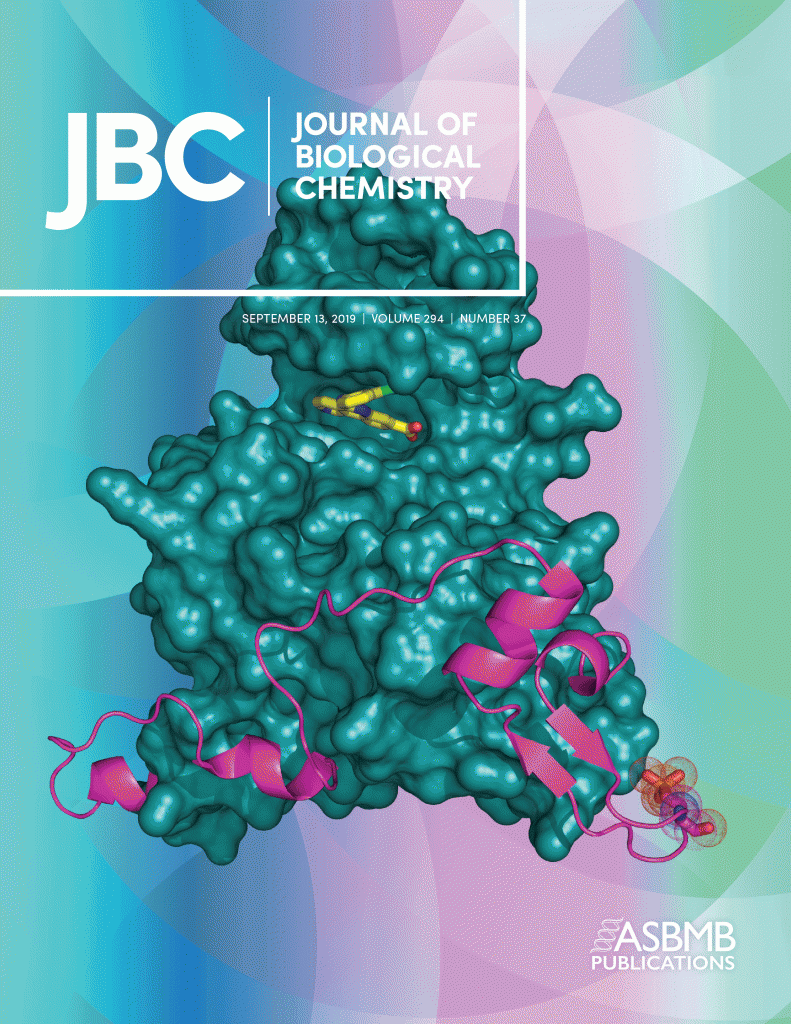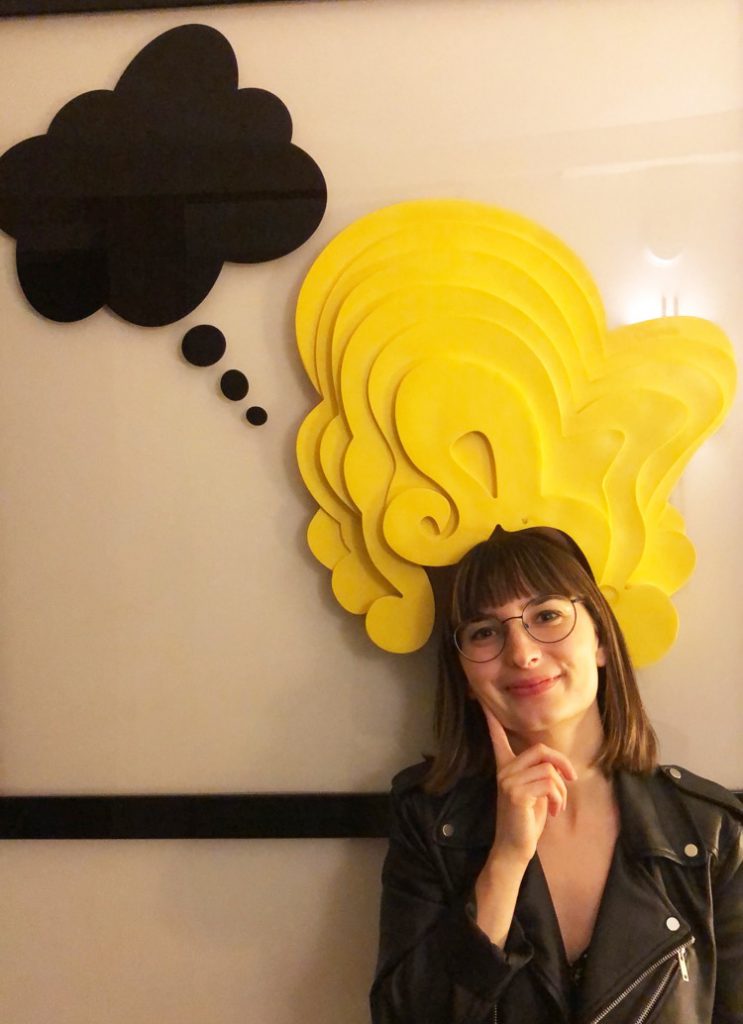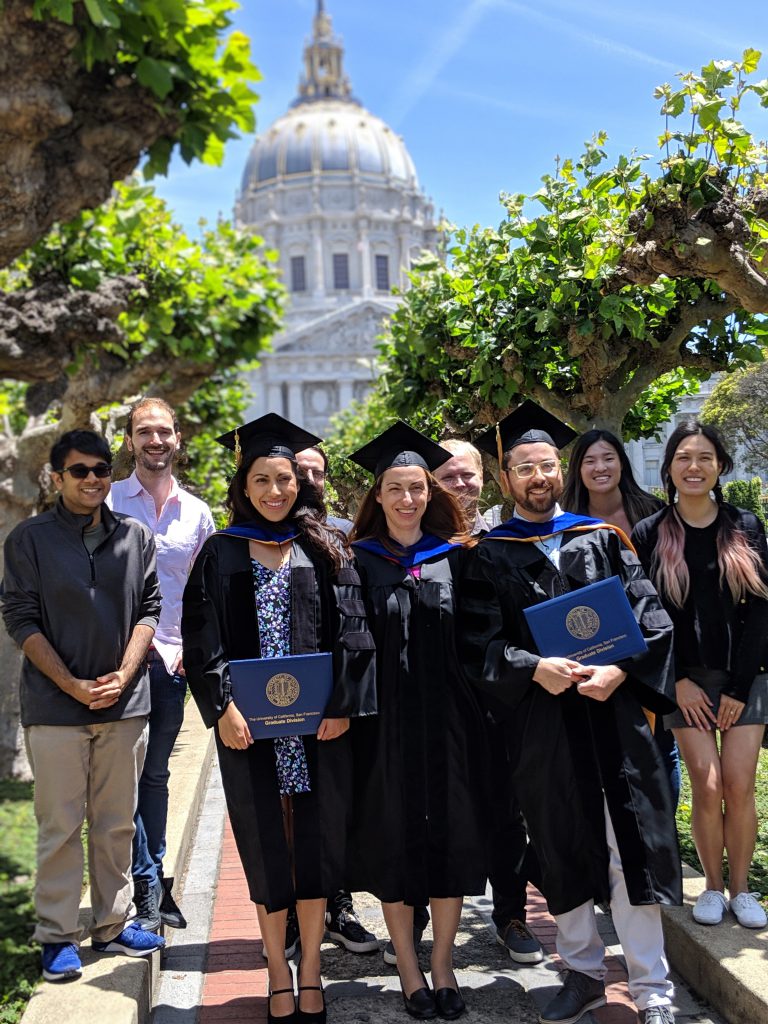Congratulations to Chris and Lijun on publication of their paper in which we present the first crystal structure of a HIPK kinase family member, HIPK2, bound to a small molecule kinase inhibitor. Our structure reveals architecture of the entire kinase domain, the inhibitor-bound active site, and of the CMGC insert region, characteristic for this class of kinases. Our structure opens previously closed doors to design of specific HIPK2 inhibitors and functional exploration of the unique CMGC insert region in HIPK2 signaling. This project was done in collaboration with Dr. David Jablons (UCSF) and Dr. Kannan Natarajan (University of Georgia). The story made the cover of JBC and was described in an editorial in Science Signaling!
Joint lab retreat with the Wang lab
Together with the Wang lab, our neighbors on the 4th floor of CVRI, we spent July 18th in Sonoma, hiking in the Sugarloaf Ridge State Park and enjoying delicious food and drinks in Landmark Vineyards.
The PEAK3 paper is published
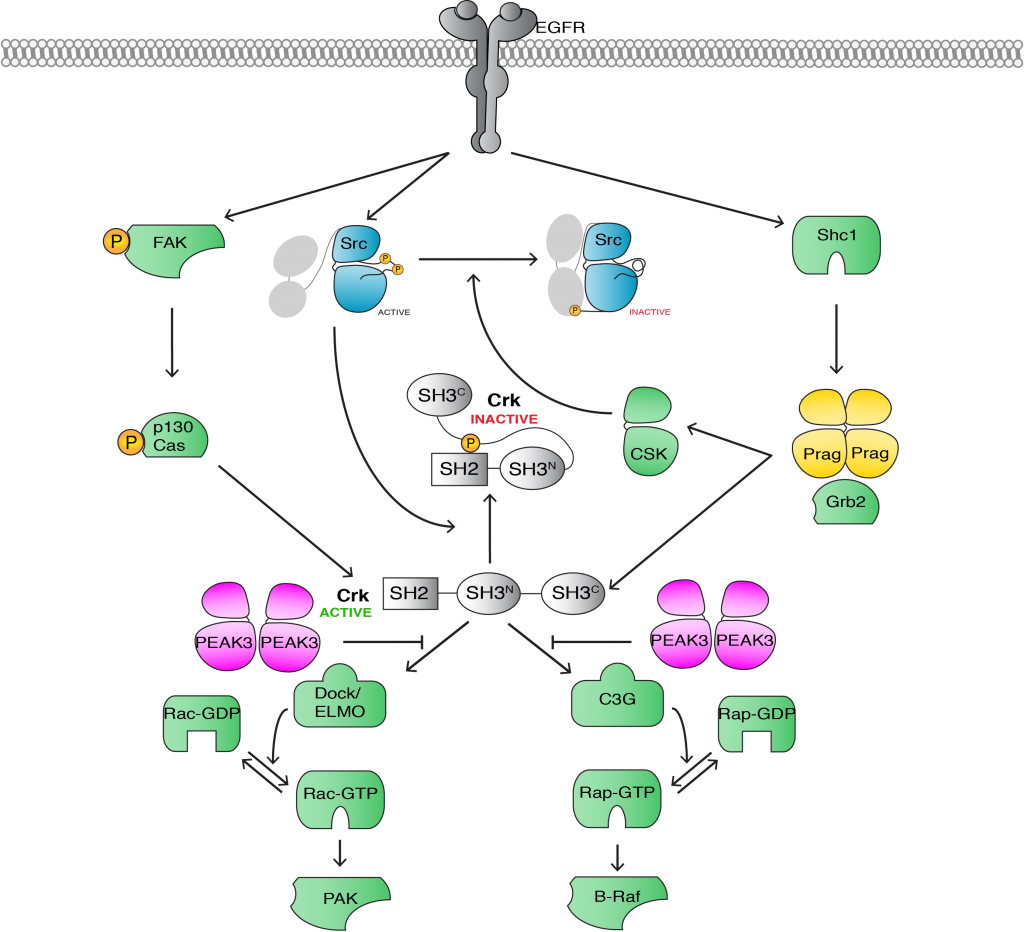
The proposed mechanism for the inhibitory role of PEAK3 in CrkII signaling
Congratulations to Mitch and Megan whose paper describing first functional analysis of the new human protein kinase, PEAK3, not annotated in the original human kinome was published in the July issue of PNAS (Lopez, Lo et al, 2019). This work, done in collaboration with the group of Krzysztof Pawlowski (Warsaw University), provides an in-depth analysis of PEAK3 evolution, domain structure and sequence homology with other NKF3 kinases. Through an unbiased screen for PEAK3 interactors we unveiled a multi-layered connection between PEAK3 and cellular motility, centered on regulation of the CrkII adaptor protein. These data also show that a partially overlapping set of the putative PEAK3 interactors involves proteins linked to acute myleoid leukemia (AML).
Madi Ho joins us for the summer
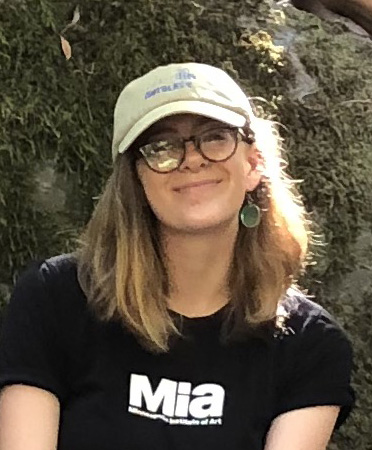
Madeline (Madi) Ho who is currently an undergraduate at Carleton College joined us for a summer research project through the UCSF Summer Research Training Program (SRTP). Welcome!
Melissa and Matt Call visit UCSF

On July 1st, together with Bill DeGrado, our lab was thrilled to host Matt and Melissa Call from the Walter and Eliza Hall Research Institute in Melbourne, Australia, for a research symposium at UCSF. Matt and Melissa are not only brilliant biophysicists and structural biologists, but also PhD Advisors of our very own Raph Trenker – currently a postdoctoral fellow in the Jura lab 🙂
Hayarpi Torosyan joins the lab
We are thrilled that Hayarpi Torosyan from the Biophysics Graduate Program, who rotated in Winter quarter, joined the Jura lab!
Congratulations to Karen Ruiz and Mitchell Lopez on their commencement!
On June 5th, 2019, whole lab celebrated with Karen and Mitch during the Graduate Division Commencement Ceremony. Congratulations!!
Ed Linossi joins the lab

Big welcome to our new postdoc Ed Linossi, who joined us in April this year. Ed received his PhD from the Walter and Eliza Hall Institute of Medical Research in Melbourne Australia studying signaling by the Suppressor of Cytokine Signaling 5 (SOCS5) protein -specifically contribution of its disordered regions to signal transduction.
